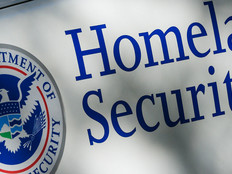DHS to Roll Out Governmentwide CDM Dashboard
The Department of Homeland Security will soon unveil a federal dashboard for the Continuous Diagnostics and Mitigation (CDM) program to give the agency a deeper and more up-to-date view of cybersecurity vulnerabilities across the government.
The federal dashboard will consolidate feeds from agency CDM dashboards, according to Jeanette Manfra, assistant secretary of cybersecurity and communications at DHS.
Ultimately, DHS and the Office of Management and Budget could use the federal dashboard to decide how best to direct resources to combat cybersecurity threats across the federal enterprise, Manfra said at an Oct. 3 hearing before the House Homeland Security Committee’s Subcommittee on Cybersecurity and Infrastructure Protection.
“[DHS] will be receiving feeds from those agency dashboards,” Manfra said, according to Federal News Radio. “That will then allow us to have more near-real-time understanding of what those sensors are identifying on those agency networks and allow us to better prioritize vulnerability management for our agencies.”
DHS has been putting sensors on endpoints inside on-premises data centers and is working on placing sensors inside cloud networks, MeriTalk reports. “This will be a game-changing capability for the federal government and for the agency in particular,” Manfra said a few days before the hearing at the Center for Strategic and International Studies on in Washington, D.C., according to MeriTalk.
Expanding CDM’s Cybersecurity Capabilities
CDM allows agencies to monitor their IT systems and then respond almost instantaneously to vulnerabilities. The program enables agencies to prioritize the risks based on how severe they might be in an effort to let cybersecurity personnel mitigate the most significant problems first. CDM offers commercial off-the-shelf tools — hardware, software and services — that agencies can access via a central fund. DHS runs the CDM program in partnership with the General Services Administration.
As FedTech recently reported, the program consists of four phases of activity designed to provide network administrators with real-time information about the state of their networks.
Each phase is designed to answer specific questions:
- Phase 1: What is on the network?
- Phase 2: Who is on the network?
- Phase 3: How is the network protected? What is happening on the network?
- Phase 4: What role exists for emerging tools and technologies?
The White House’s IT modernization report, released Aug. 30, supports the idea of a federal CDM dashboard. Its section on shared services notes that, upon approval of President Donald Trump and within 150 days, DHS will “complete the data exchanges between the agency- and Federal-level dashboards to provide enterprise-wide situational awareness of an agency’s cyber posture.” The deadline for that is roughly Jan. 27.
Within a month after that, in partnership with the CIO Council, DHS is directed to “implement a concept of operations for the Federal dashboard to include procedures to manage cyber risks across the Federal enterprise, and other factors pertinent to the broader Federal CIO community.”
Most agencies are in phase 1 and phase 2 of CDM deployment. Manfra said at the hearing that DHS’s ongoing CDM efforts dovetail with the White House’s approach to IT modernization and push for greater use of shared services.
“We do see a lot of potential for CDM in the ability to deliver tools at a lower cost across agencies,” Manfra said, Federal News Radio reports. “This is the first time that many agencies have had access to this level of automated data to understand what is on their network. We see a lot of potential for this, but for many agencies, there’s a lot of capability that has to be built. We’re continuing to take advantage of things like shared services [and] more capability from DHS to deploy to agencies who need it most.”









